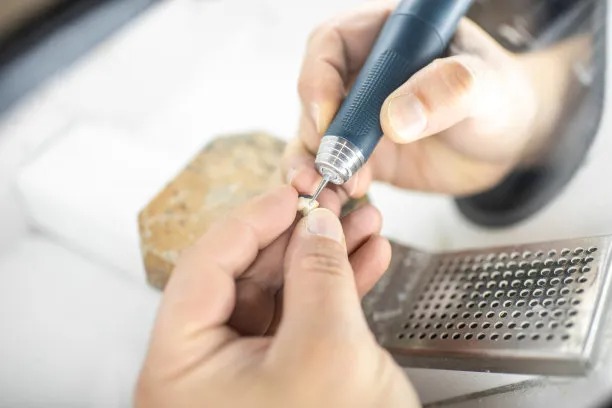The Importance of Proper Techniques and Care When Extracting a Tooth for Better Oral Health
Summary: Extracting a tooth is a procedure that requires meticulous attention and proper techniques to ensure optimal oral health. This article emphasizes the significance of employing correct methods during tooth extraction and adhering to post-extraction care. We will explore the importance of ensuring a sterile environment, understanding the right tools and techniques, recognizing potential complications, and implementing effective aftercare. By following these guidelines, dental practitioners can minimize discomfort and prevent infections, ultimately leading to improved overall oral health for patients. The insights presented herein will help both dental professionals and patients understand the multidisciplinary approach required for successful tooth extraction and post-operative recovery.
1. Ensuring a Sterile Environment for Extraction

One of the most critical aspects of tooth extraction is maintaining a sterile environment. A clean and disinfected area minimizes the risk of bacterial contamination, which can lead to infections post-surgery. Dental professionals must ensure that all instruments used during the procedure are properly sterilized. This includes scalers, forceps, and other surgical tools that come into contact with the patients oral cavity.
The dental operatory should also be prepared meticulously before any extraction takes place. This requires thorough cleaning of surfaces and use of barriers to protect tools and equipment from contamination. A sterile environment is not just about cleanliness; it is about creating a safe setting that enhances the effectiveness of the procedure while prioritizing patient health.
Additionally, the dental practitioner should wear protective garb, including gloves, masks, and eye protection, to further prevent the transfer of pathogens. These steps bolster patient confidence and play a vital role in the success of the extraction process, emphasizing the importance of stringent hygiene protocols.
2. Utilizing the Right Tools and Techniques
Another essential aspect of successful tooth extraction is selecting the right tools and employing suitable techniques tailored to the individual patient. A variety of extraction instruments are available, and using the appropriate tools can significantly reduce complications. For example, different types of forceps exist for upper and lower teeth, and knowing which to use is crucial for a smooth extraction.
Moreover, the technique used during the extraction procedure can impact recovery time and overall patient comfort. Gentle, controlled movements and an understanding of tooth anatomy help minimize trauma to surrounding tissues. In some cases, advanced techniques such as surgical extractions may be necessary, particularly when dealing with impacted teeth or complex cases.
Furthermore, continuous education and training on the latest advancements in dental techniques equip oral health professionals with the expertise to make informed decisions during the procedure. Utilizing advanced sedatives and anesthesia options can also improve patient experiences and outcomes, ultimately leading to better oral health.
3. Recognizing and Addressing Potential Complications
A knowledgeable dental practitioner must be adept at recognizing potential complications that may arise during or after a tooth extraction. Common issues include dry socket, excessive bleeding, and infections. By being aware of these risks, dentists can take proactive measures to mitigate them.
Understanding the signs of dry socket, for example, can lead to immediate intervention, reducing discomfort for the patient. Educating patients about post-operative signs to watch for is also essential. They should know when to seek further care to address any developing issues quickly.
Additionally, practitioners should be prepared with a comprehensive plan to address complications should they arise. This includes having the right medications on hand to manage pain and infections. An understanding of the patient’s medical history and potential allergies is also necessary for appropriate treatment.
4. Implementing Effective Aftercare Strategies
Post-extraction care is vital for ensuring swift recovery and maintaining optimal oral health. Patients need clear, detailed instructions on how to care for the extraction site. This may include dietary recommendations, hygiene practices, and activities to avoid during the healing process.
For instance, patients should refrain from using straws or spitting, as these actions may dislodge the blood clot necessary for healing. Regular follow-up appointments allow practitioners to monitor healing and address any lingering concerns. This attentiveness reinforces the significance of aftercare in promoting overall oral health.
Additionally, patients should be informed about pain management and the importance of taking prescribed medications correctly. Encouraging open communication between the patient and practitioner during the recovery period can enhance outcomes and the overall patient experience, making it a vital aspect of proper dental care.
Summary: In summary, effective tooth extraction is not merely about removing a tooth; it involves a comprehensive approach that includes maintaining a sterile environment, using the right tools and techniques, recognizing potential risks, and implementing strong aftercare. Each of these elements contributes to minimizing complications and supporting the patients overall oral health.
By understanding the complexity of this procedure, both dental professionals and patients can work together for better outcomes. Proper techniques and aftercare will lead to healthier smiles and enhanced oral well-being!
This article is compiled by Vickong Dental and the content is for reference only.


